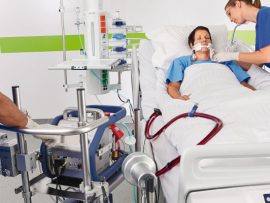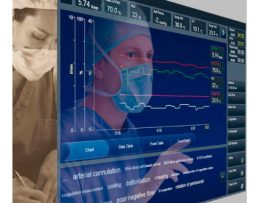Abstract Purpose of review Cardiac surgery has traditionally relied upon invasive hemodynamic monitoring, including regular use of pulmonary artery catheters. More recently, there has been advancement in our understanding as..
Lire la suiteAbstract With the aging of society and the increase in people’s concern for personal health, long-term physiological signal monitoring in daily life is in demand. In recent years, electronic skin..
Lire la suiteAbstract Purpose of review To provide an overview of the role of remote monitoring tools in management of critically-ill patients requiring acute mechanical circulatory support (MCS). Recent findings Tele-critical care systems have..
Lire la suiteAbstract OBJECTIVES: Superior vena cava oxygen saturation (SVC O2) monitoring is well described for early detection of hemodynamic deterioration after neonatal cardiac surgery but inferior vena cava vein oxygen saturation (IVC O2) monitoring data..
Lire la suiteAbstract Prolonged non-contact camera-based monitoring in critically ill patients presents unique challenges, but may facilitate safe recovery. A study was designed to evaluate the feasibility of introducing a non-contact video..
Lire la suiteAbstract Objectives Less-invasive and continuous cardiac output monitors recently have been developed to monitor patient hemodynamics. The aim of this study was to compare the accuracy, precision, and trending ability..
Lire la suiteAbstract Extracorporeal membrane oxygenation is challenged by several potential complications. Adverse neurologic events such as intracranial hemorrhages, strokes, seizures, and brain death are among the most detrimental and even catastrophic..
Lire la suiteAbstract The management of a patient placed on extracorporeal membrane oxygenation (ECMO) is a team effort. The anesthesiology team plays an integral part during cannulation and oftentimes as well during..
Lire la suiteAbstract Hypovolemia, anemia and hypoxemia may cause critical deterioration in the oxygen delivery (DO2). Their early detection followed by a prompt and appropriate intervention is a cornerstone in the care..
Lire la suiteAbstract Purpose of review There is an increasing interest in the application of near-infrared spectroscopy (NIRS) as a monitoring tool in noncardiac surgery. This review summarizes the latest developments and..
Lire la suiteAbstract Cardiac surgical outcomes in the UK have consistently improved despite increasing procedure complexity and ‘sicker’ patients. Numerous anaesthetic techniques are employed with no definitive evidence clearly demonstrating superiority of..
Lire la suiteBackground Various techniques have been employed for the early detection of perioperative cerebral ischaemia and hypoxia. Cerebral near‐infrared spectroscopy (NIRS) is increasingly used in this clinical scenario to monitor brain..
Lire la suiteAbstract Patient safety is an activity to mitigate preventable patient harm that may occur during the delivery of medical care. The European Board of Anaesthesiology (EBA)/European Union of Medical Specialists..
Lire la suite








